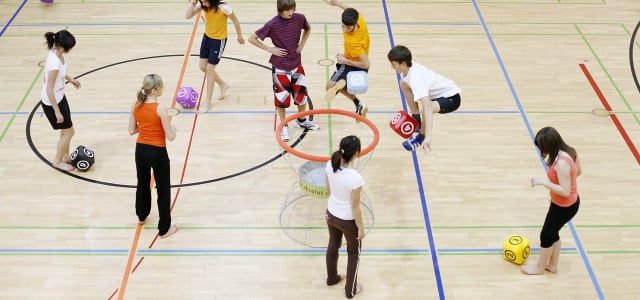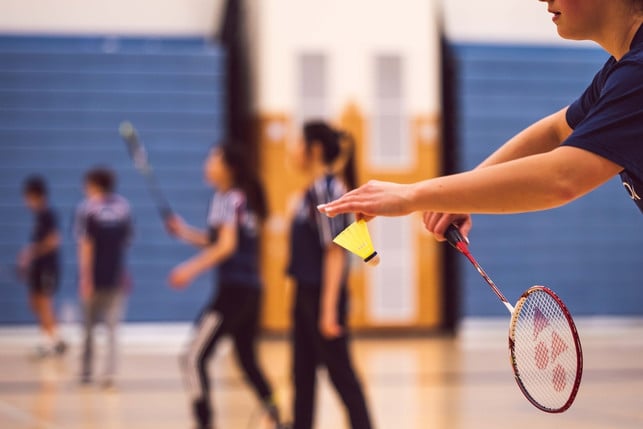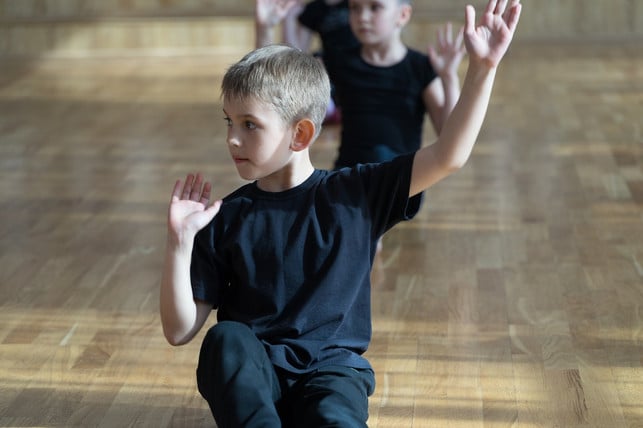
For some, school sports are the highlight of the entire school week, for the other the worst humiliation. You can find out why school sports for many students become a stressful experience here.
Trigger warning: In this article, bullying, sexual harassment and physical abuse are treated in several sections. If you have concerns that the topic could burden you, consider in advance whether you want to read the article.
According to the Conference of Ministers of Education (KMK), school sport is an elementary part of a holistic education. This should not only promote exercise and the physical development of the children, but also contribute to emotional, linguistic and social development. Students can also be used in games: also train aspects such as solidarity, teamwork and empathy inside.
In addition, teachers can introduce children to sporting activities in a playful way. This seems to be of particular importance, especially in view of the social lack of movement. According to the WHO, four out of five young people are not sufficient. Other experts also agree: a large part of the young people would need more movement in everyday life and spend too much time with electronic media.
The WHO recommends that children and adolescents to be operated moderately to intensive sporting sport at least 60 minutes a day. On at least three days you should increase the intensity and really sweat.
Sitting activities should be compensated for in this way. After all, children and adolescents spend a lot of time sitting every day – be it at school or at home in front of the laptop or the PlayStation. Too much sitting, however, numerous diseases and symptoms, such as back pain, diabetes and high blood pressure. It is all the more important that teachers make children want to move in school sport. However, the opposite is sometimes the case.
Humiliation in school sports: not uncommon
The Krautreporter platform carried out a survey on school sports in February 2022. Around 5600 people took part. The sad result: Over 80 percent of them said they still had little desire for movement due to negative experiences in physical education. The experiences of the participants tell primarily about humiliation and bullying.
One person reports that the sports teacher always pushed the children into the water in swimming lessons and kept away from the edge of the pool with a bar. In another case, the sports teacher asked all students between 16 and 18 to move outdoors on the sports field. Others tell how they were exposed to poor performance by their teachers before the entire class or always elected to the team as the last person.
Such experiences are deeply characterized by consciousness. This is confirmed by sports teacher Günter Stibbe to the Spectrum magazine. So you are only physically exposed to your classmates in school sports: inside and teachers. As a result, the physical education lessons touch “intimate and existential”. Unfortunately, this also makes him a starting point for bullying that is used so frequently. According to the spectrum, children and adolescents with less pronounced motor skills still experience humiliation in school sports – for example when gymnastics before the entire class or when they feel how undesirable they are in their team.
How negative experiences in physical education have a mentally not yet scientifically researched. But there are studies that show that young people who were affected by bullying are later more susceptible to depression and even suicide attempts.
Sport and performance: that’s what school sports are about

According to the spectrum, some children literally illustrate their joy in sport due to repeated humiliations and poor grades. Because in school sports they learn that they are unsportsmanlike and therefore not suitable for sport.
According to the sports educator Stibbe, this indicates that the young people have internalized, only those who have already been in top shape can do sports. Stibbe speaks of a “catastrophe”. After all, sport should be there for people and not the other way around.
But it is partly the school sport itself that solidifies the pressure to perform in the minds of children and young people. In 2006, researchers asked about 9,000 students: inside and their teachers about the goals of physical education.
- The teachers: Inside, saw the most important goal in promoting fair ways. This was followed by the goal of inspiring the students: inspiring the inside of the sports. “Health and fitness promote” landed in third place.
- This goal ended up in the evaluation of the students: internal responses in first place. Immediately afterwards, the children and adolescents stated that “improving performance in individual sports”.
This shows how much the performance aspect for children is linked to school sports. No wonder: after all, the teachers rate the sporting achievements of their students: continuously with grades inside.
Notes in physical education: do you need that?
Whether grades in school sports actually make sense is a controversial topic. According to Stibbe, sport needs a certain feedback and a form of evaluation. However, teachers would not necessarily have to give a fixed note on absolute performance at the end, but could also reward progress with grades. The progress assessment is then more adapted to the individual child. After all, it is about how a child has improved in the context of his own physical requirements and not about how it performs in the class average.
Especially in view of different types and the fluctuating growth phases in puberty, it actually seems questionable to use a general scale for all students: inside.
Whether school sports work without grades is repeatedly tested in projects-for example in the Schiller-Gymnasium in Cologne a few years ago. Up to the eighth grade, children and adolescents received no grades in physical education, but an individual feedback sheet with tips for improvements. Above all, the focus was on the joy of movement and your own little development steps.
Legally, “physical education without grades” is only possible to a limited extent, because it must adhere to the school laws of the federal state. This makes a broader research very difficult. Completely note -free physical education would be more conceivable in private schools with a special educational concept or in extracurricular learning contexts. As is well known, there are no grades in Montessori pedagogy, but in general in the younger classes.
Conclusion: the school sport of the future

Spectrum and herb reporters show that intimidating and demotivating experiences in school sports are not just a phenomenon of the past. Because not much or not enough has changed in the general concept of physical education: strict music tables and pre -gymnastics still take place today and, above all, reward powerful and competitive children. Students: Inside with less pronounced sporting skills, on the other hand, are the clear losers: inside of this principle and have almost none of it.
It would therefore be desirable that school sports move away from a strict performance orientation and actually focused on the joy of movement. In order to implement this approach, individual feedback and the integration of non-competitive sports (such as children’s yoga, gymnastics and dancing) could be suitable-as well as other methods to put together teams for the next game.
Revised by Denise Schmucker
Read more on utopia.de:
- Find sports motivation: that can help you
- Early sports: 8 reasons for a morning workout
- Workout at home: 4 ideas for sport in your own four walls
** marked with ** or orange underlined Links to sources of supply are partially partner links: If you buy here, you will actively support Techzle\.com, because we will then receive a small part of the sales proceeds. More information.